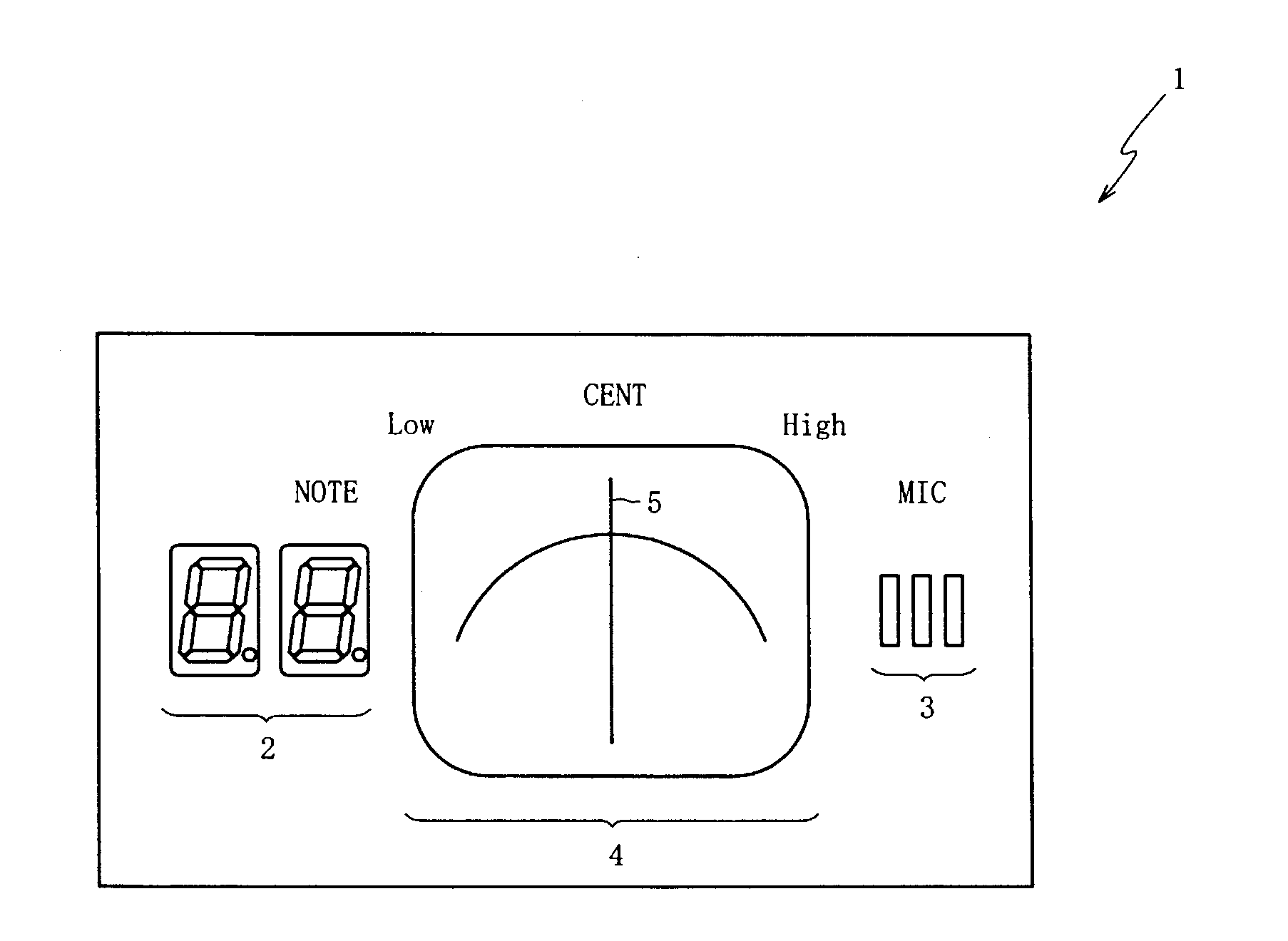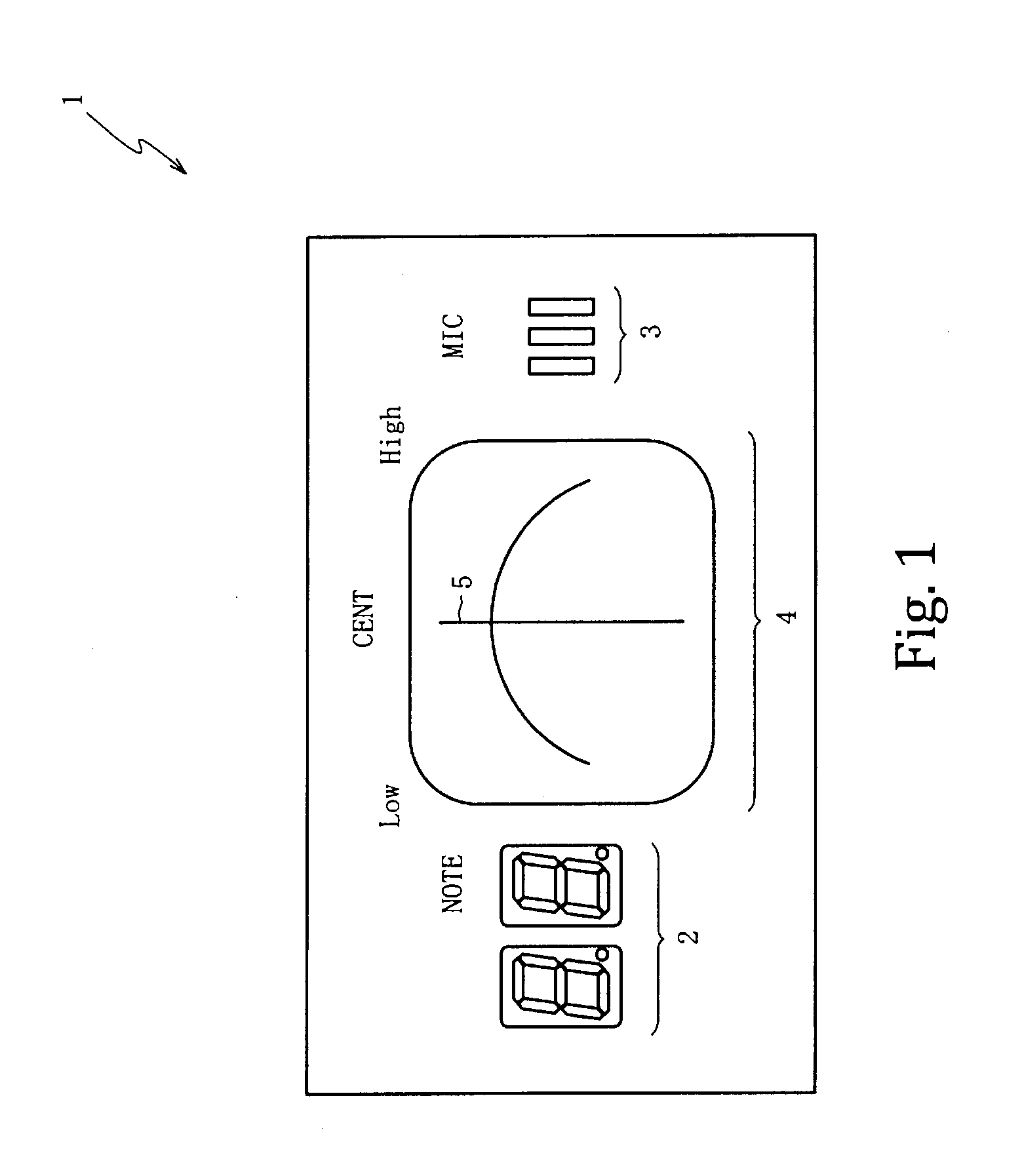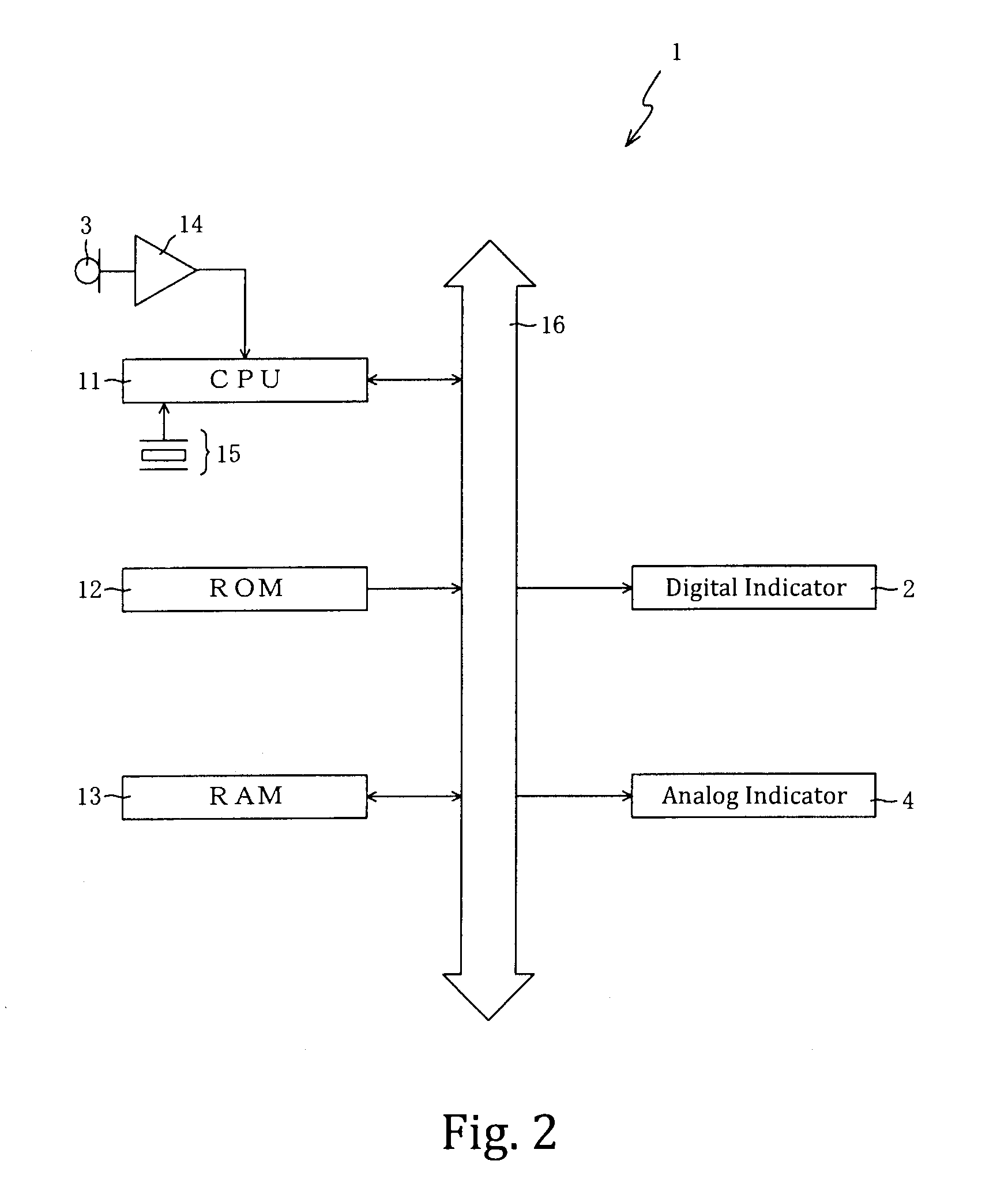Tuner device
a technology of a tuning device and a clock portion, which is applied in the direction of measuring devices, speech analysis, instruments, etc., can solve the problems of k clock portion, measurement error with respect to the duration of one cycle of the measured signal, and the response time at values that are not properly maintained, and achieve the effect of reducing the number of errors and reducing the accuracy of the measured signal
- Summary
- Abstract
- Description
- Claims
- Application Information
AI Technical Summary
Benefits of technology
Problems solved by technology
Method used
Image
Examples
Embodiment Construction
[0045]FIG. 1 is an exterior view of a tuner 1 for use with a musical instrument. In various embodiments, the tuner 1 may be configured to restrain current consumption (relative to conventional pitch detection devices in which the clock signal frequency is several hundred kHz) by lowering the clock signal frequency to about several tens of kHz after both the error accuracy (d) of a pitch of a musical note that has been input (so as to be measured) and the response time (t) have satisfied the values required as design conditions of the tuner 1.
[0046]The tuner 1 may use (but is not limited to) the design conditions provided below. The frequency (Fc) of a clock signal is 32.768 kHz; the detection range of the frequency (f) of a measured signal is 30.9 Hz-659 Hz; the required error accuracy (d) is ±1 cent; and the required response time (t) is within 150 ms. Other embodiments may employ different design conditions as may be required.
[0047]The tuner 1 may include, but is not limited to, a...
PUM
 Login to View More
Login to View More Abstract
Description
Claims
Application Information
 Login to View More
Login to View More - R&D
- Intellectual Property
- Life Sciences
- Materials
- Tech Scout
- Unparalleled Data Quality
- Higher Quality Content
- 60% Fewer Hallucinations
Browse by: Latest US Patents, China's latest patents, Technical Efficacy Thesaurus, Application Domain, Technology Topic, Popular Technical Reports.
© 2025 PatSnap. All rights reserved.Legal|Privacy policy|Modern Slavery Act Transparency Statement|Sitemap|About US| Contact US: help@patsnap.com



